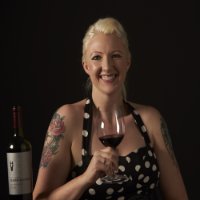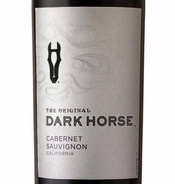When the Dark Horse wines were in the planning stages a few short years ago, inside the brain trust at E. & J. Gallo Winery the concept was commonly called the "20-7 project."
Throughout its history, Gallo has been sensitive to the consumer need for quality value wine. Consider the cost, for example, of putting a modest $20 wine on the dinner table every night. The tab comes to more than $7,000 a year. For many couples raising children and saving for college, the price is simply too high, no matter their level of interest in wine.
The idea behind the 20-7 project was to meet the demand for value with a wine that tasted like a $20 bottle, but cost $7. Despite the very best of intentions, it didn’t pencil out. Undaunted, Gallo upped the price rather than abandoning the project altogether.
 The result is a new brand that is growing in popularity under senior winemaker Beth Liston, who oversees Gallo’s massive production facility in Livingston, California. Most of the grapes for Dark Horse are sourced from the Lodi region in the Sacramento Delta, and the wines are line-priced at about $9 a bottle.
The result is a new brand that is growing in popularity under senior winemaker Beth Liston, who oversees Gallo’s massive production facility in Livingston, California. Most of the grapes for Dark Horse are sourced from the Lodi region in the Sacramento Delta, and the wines are line-priced at about $9 a bottle.
Winemaker Beth Liston
While the price is attractive, it would be meaningless if the wines didn’t deliver. On that score, recent critical acclaim tells Liston she’s on to something. At the San Diego International Wine Challenge earlier this year, for example, seven Dark Horse wines medaled, including a 90-point gold medal for the 2015 Dark Horse Sauvignon Blanc. Even its pinot noir took an 88-point silver medal, something of a surprise because the region is generally thought to be too warm for top-notch pinot.
"Pinot noir at this price point is a challenge," Liston told me recently. "We’re always striving to get those hints of lavender and violets and cherries."
striving to get those hints of lavender and violets and cherries."
The Dark Horse project might not have been possible at one time, but advances in viticulture and technical know-how at the winery have broadened the opportunities to make good wine outside of the more established coastal wine regions.
"The Lodi growers are doing great work with lower yields," said Liston, "and you do have some cool nights because of the Delta."
Her most unusual wine is the Big Red Blend, which changes every year. Drawing upon Gallo’s connections in Spain, Italy and South America, it can include everything from cabernet sauvignon and merlot to tempranillo, sangiovese and malbec. The most recent Big Red Blend collected an 87-point silver medal at the San Diego competition.
I tasted the lineup recently and was most impressed with the merlot and chardonnay — grapes thought to be more suitable for a cooler climate like pinot noir. The Big Red Blend also showed very well.
The name Dark Horse was chosen, as it was explained to me, because the quality of the bottle "sneaks up" on you. It’s so true.
8
